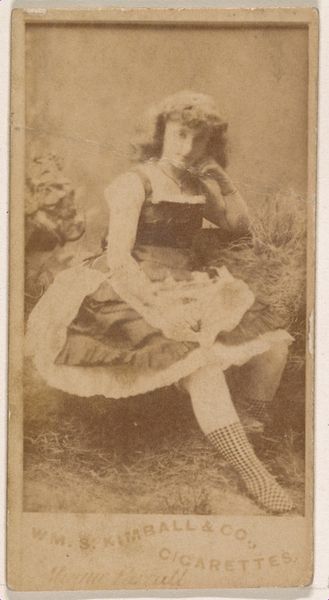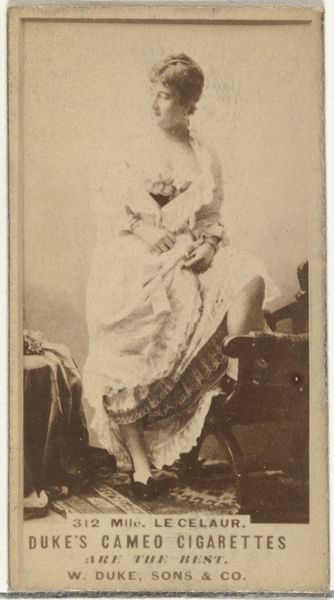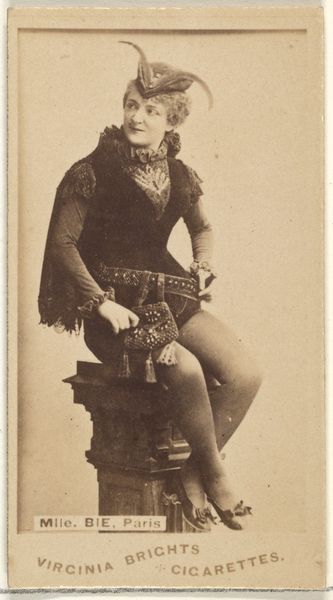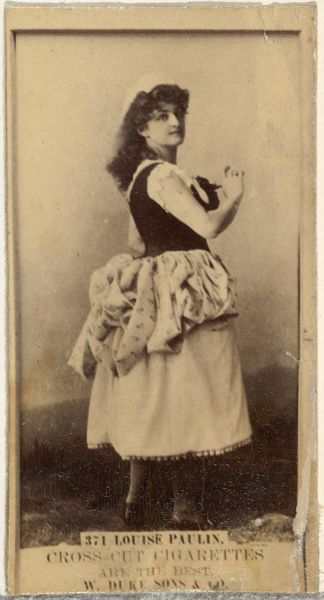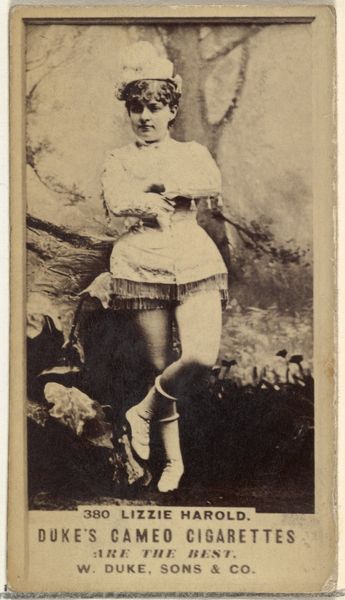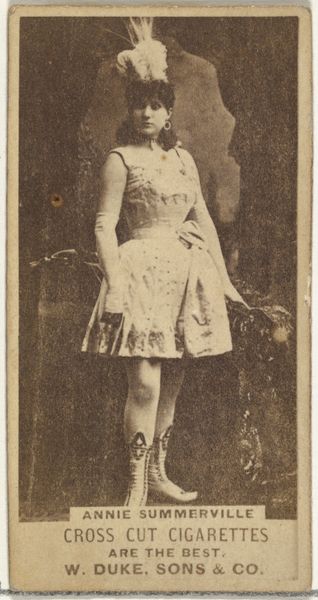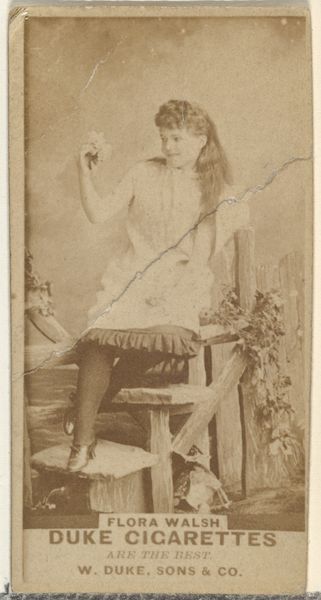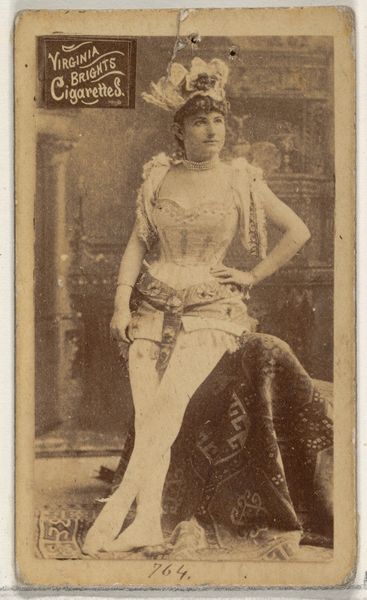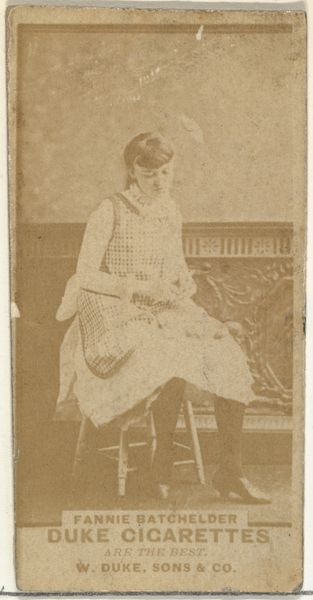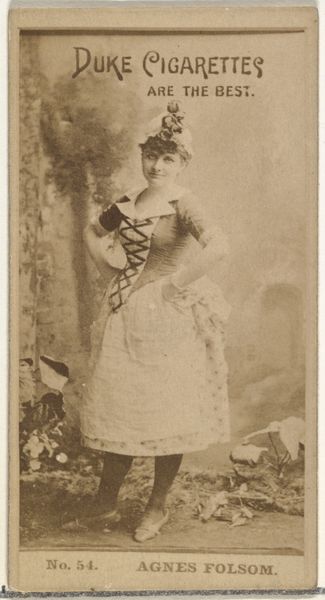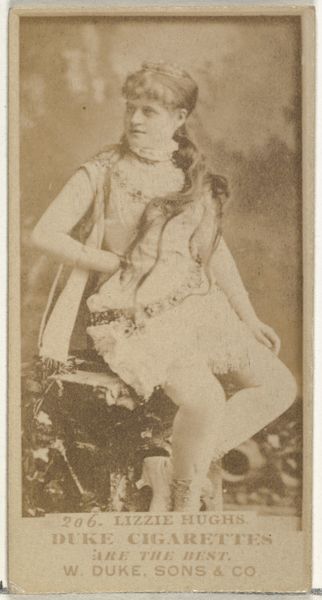
Card Number 377, Ruby Leonard, from the Actors and Actresses series (N145-3) issued by Duke Sons & Co. to promote Cross Cut Cigarettes 1880s
0:00
0:00
print, photography
#
portrait
# print
#
photography
#
19th century
#
genre-painting
#
realism
Dimensions: Sheet: 2 11/16 × 1 3/8 in. (6.8 × 3.5 cm)
Copyright: Public Domain
Editor: This is a print of a photograph from the 1880s, "Card Number 377, Ruby Leonard" from the Actors and Actresses series by W. Duke Sons & Co. I'm struck by its modesty, and it's much smaller than I expected. What's interesting about this piece? Curator: Well, first off, note it's a trade card distributed to promote Cross Cut Cigarettes, a pretty blatant example of marketing utilizing the burgeoning celebrity culture of the late 19th century. But what does it *mean* that these images circulated so widely? Editor: I hadn’t thought about it like that. So it's not really about Ruby Leonard, the actress, but more about selling cigarettes? Curator: Exactly. And it's a form of visual economy, shaping public perceptions and desires. Images of actresses were highly consumable goods, tied to anxieties about leisure, labor, and gender roles in a rapidly industrializing society. Who was given space in the cultural narrative, and how? Editor: So, seeing Ruby Leonard on a cigarette card normalized a certain image, made it more desirable perhaps. Do you think that knowing this changes how we view it as "art?" Curator: Absolutely. We begin to see this card not just as a portrait, but as an artifact reflecting complex socio-political dynamics, influencing norms and values in a commercial landscape. That interplay between commerce and culture is powerful. Editor: That gives me a lot to consider about what museums choose to display and why. Thanks for expanding my understanding of how an artwork participates in culture. Curator: My pleasure. Thinking about an image’s cultural function reveals its inherent power to reflect and shape our society.
Comments
No comments
Be the first to comment and join the conversation on the ultimate creative platform.
